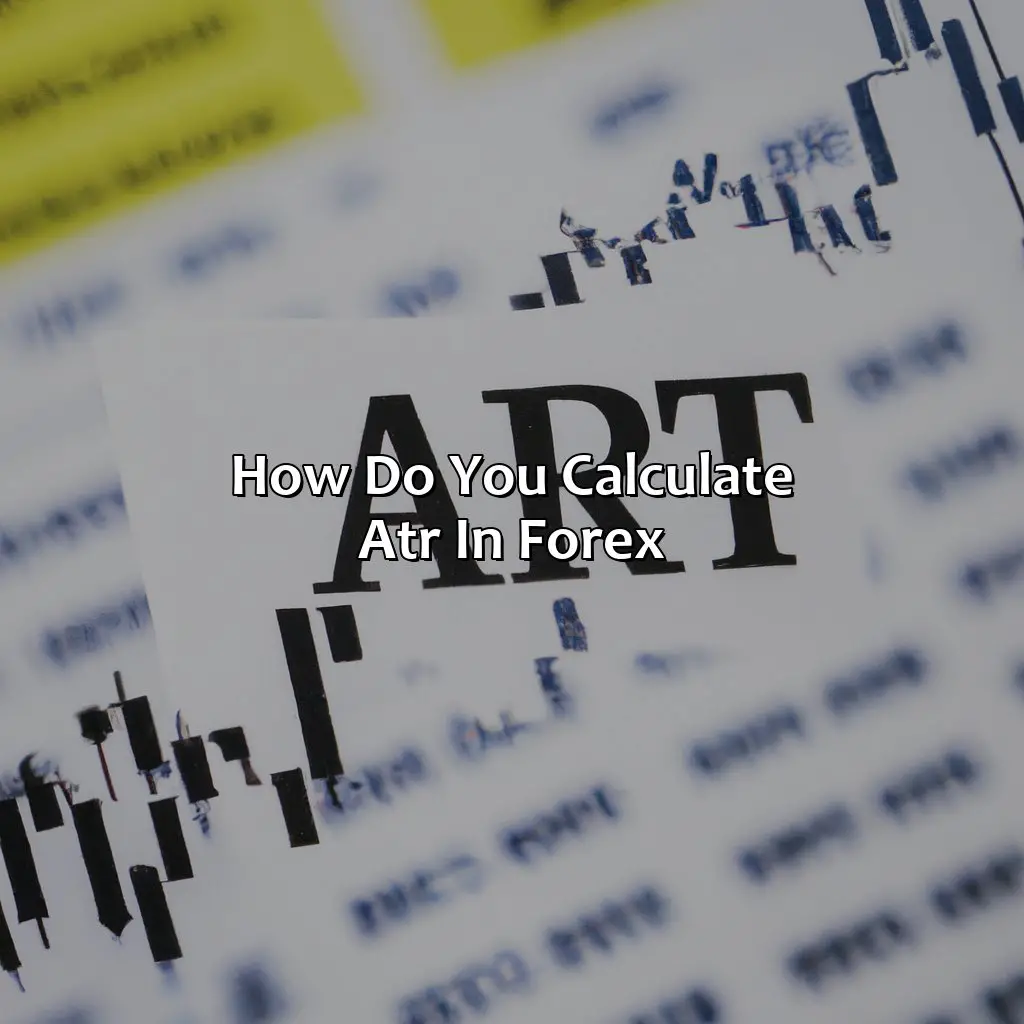
Key Takeaway:
- ATR (Average True Range) is a technical analysis indicator used to measure volatility in forex trading. It helps traders to determine the range of price movement for a particular currency pair.
- Calculating ATR involves identifying the high and low prices of a currency pair and calculating True Range (TR) based on fluctuations. The TR is calculated using the maximum of: high minus low, absolute value of high minus previous close, or absolute value of low minus previous close.
- The formula for ATR calculation involves calculating the Exponential Moving Average (EMA) or Simple Moving Average (SMA) of the TR over a specified period of time. This helps traders to get an average value of the range of price movement and helps them to make informed trading decisions.
- ATR is important in forex trading as it helps traders to determine the level of volatility in the market. This can help traders to make informed decisions about the trend, establish stop loss and take profit levels, and determine trade entry and exit points.
- Some ATR strategies for forex trading include the ATR Breakout Strategy, which involves identifying breakouts based on ATR and chart patterns, the ATR Stop Loss Strategy, which involves setting stop loss levels based on ATR and trailing stops, and the ATR Position Sizing Strategy, which involves adjusting position size based on ATR and risk management.
Understanding ATR in Forex
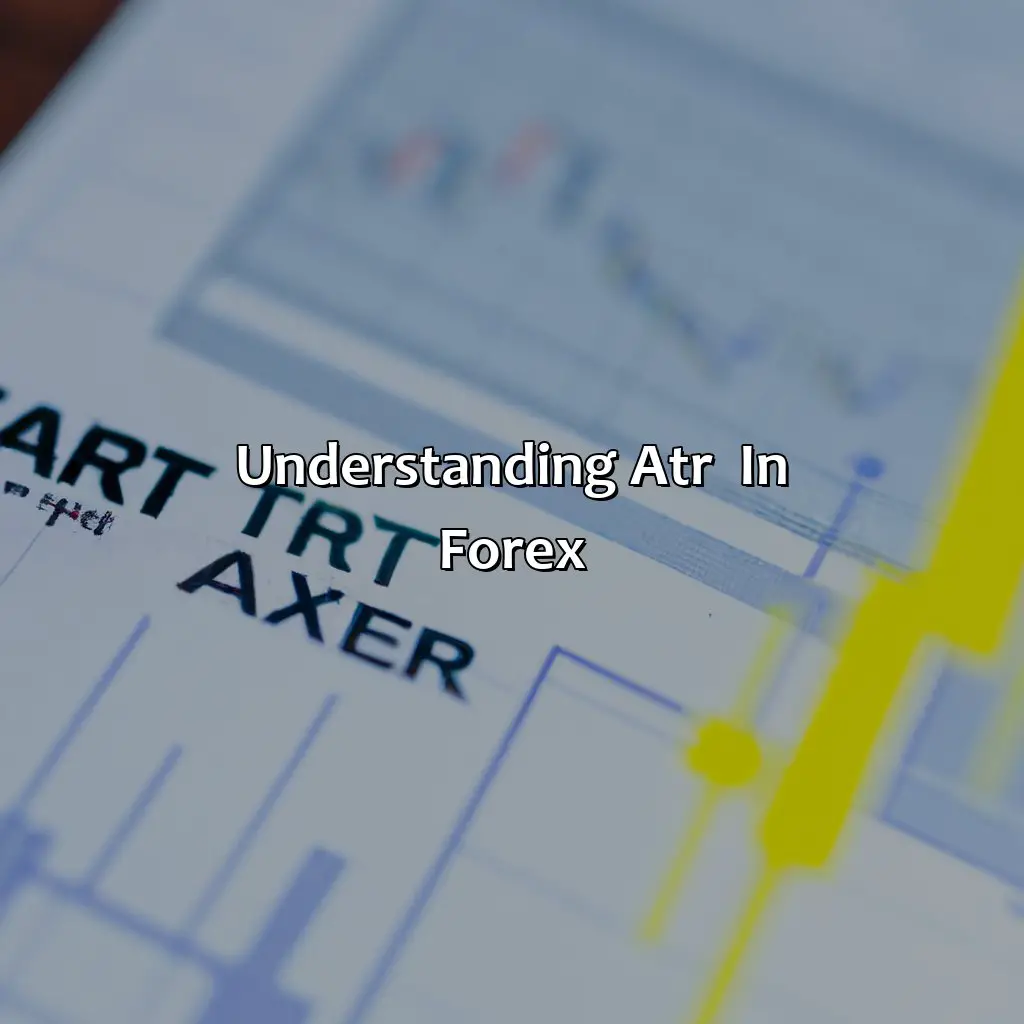
Photo Credits: forexbrokerreport.com by Thomas Hall
ATR is a popular Technical Analysis tool used in Forex Trading to measure volatility. By calculating the true range of price movements, ATR provides a reliable measure of market volatility that traders can use to manage risk. Understanding ATR in Forex is crucial for effective trade planning and execution.
ATR calculations can be complex, involving historical data analysis and mathematical computations. However, with the help of expert guidance and trading platforms, traders can easily access ATR values and use them to make informed trade decisions. ATR is an indispensable tool for every trader looking to manage risk and maximize profits in Forex Trading.
A true fact is that ATR was introduced by J. Welles Wilder Jr. in his 1978 book, “New Concepts in Technical Trading Systems.”
Calculating ATR
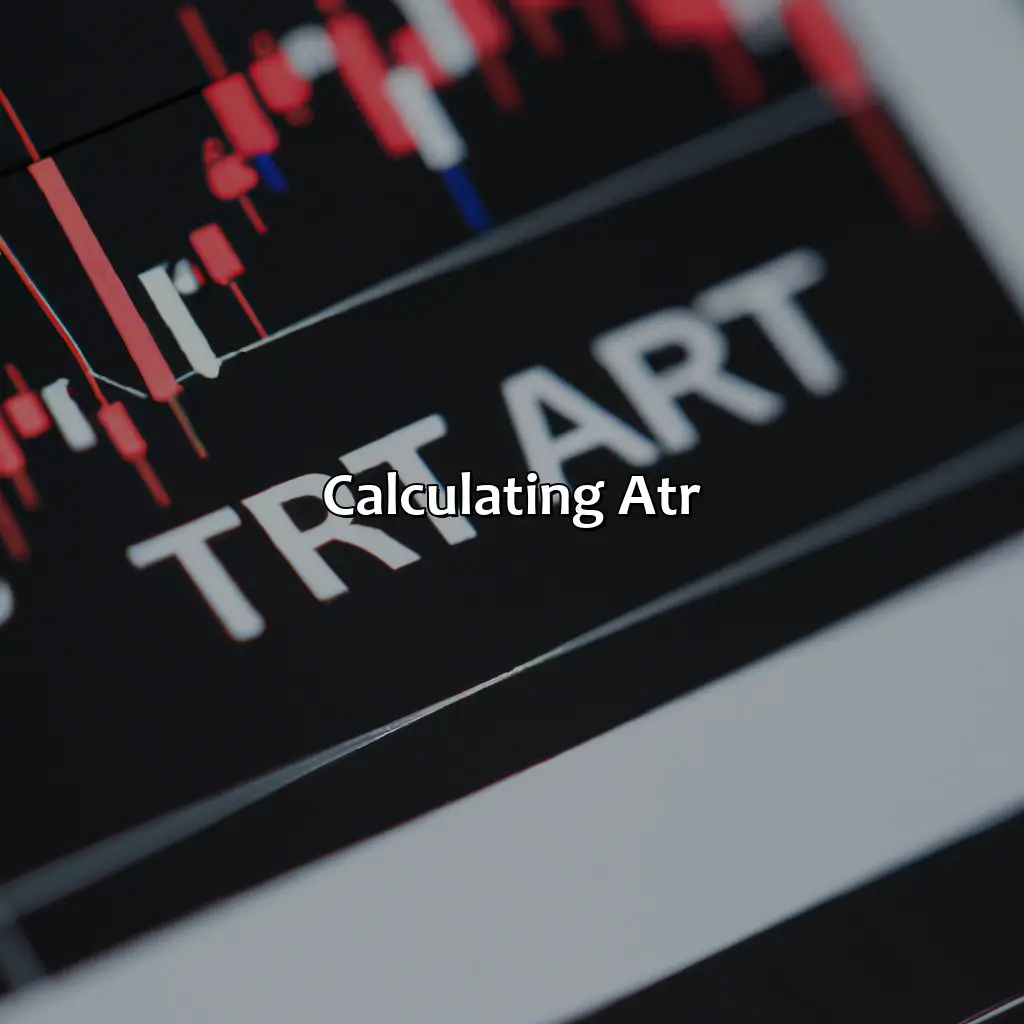
Photo Credits: forexbrokerreport.com by Sean Nelson
Calculate ATR in forex trading with tech analysis. Identify high & low prices of currency pairs. This minimizes market noise. Calculate TR (True Range). Consider fluctuations in prices. This helps determine price movement momentum. Sub-sections play essential role. Calculating ATR offers better analysis of stop loss & market volatility.
Identify the high and low prices
Identifying the Extremes of Price Competitions
Price movements in currency pairs can be erratic, making it challenging to forecast and determine a trading strategy. Identifying high and low prices helps traders understand market noise and predict price movement.
The following table shows an example of how to identify the high and low prices of a currency pair:
| Date | High | Low |
|---|---|---|
| 1 Dec | 1.2678 | 1.2555 |
| 2 Dec | 1.2789 | 1.2667 |
| 3 Dec | 1.2754 | 1.2622 |
To establish the high and low prices, we compare a candlestick’s highest point (high) with its lowest point (low). With these figures determined for three different timeframes shown above, we then calculate the Average True Range (ATR) to gauge volatility.
Furthermore, identifying highs and lows have implications for determining support (the bottom price over a specific period) and resistance levels (the ceiling price over that same time-frame). Understanding these levels is critical for predicting profitable trades.
Traders could filter out market noise by using appropriate strategies such as ATR breakout or ATR stop loss methods based on the range identified to succeed in Forex trading.
Finding the TR in forex is like chasing the ups and downs of a rollercoaster, but it’s worth it for the momentum it brings to your trades.
Calculate TR
The TR (True Range) is the difference between the high and low prices, accounting for any fluctuations in price during a specific period. Typically used as part of calculating ATR, this helps determine volatility for currency pairs and momentum in trading.
To calculate TR, identify the previous period’s high-low range and compare it to the current period’s open-high or open-low ranges, taking whichever has a larger range. This value will be used alongside previous ATR calculations to gain insight into price movement.
Calculating ATR may sound complicated, but with EMA and SMA formulas, it’s as easy as 1-2-3.
The Formula for ATR Calculation
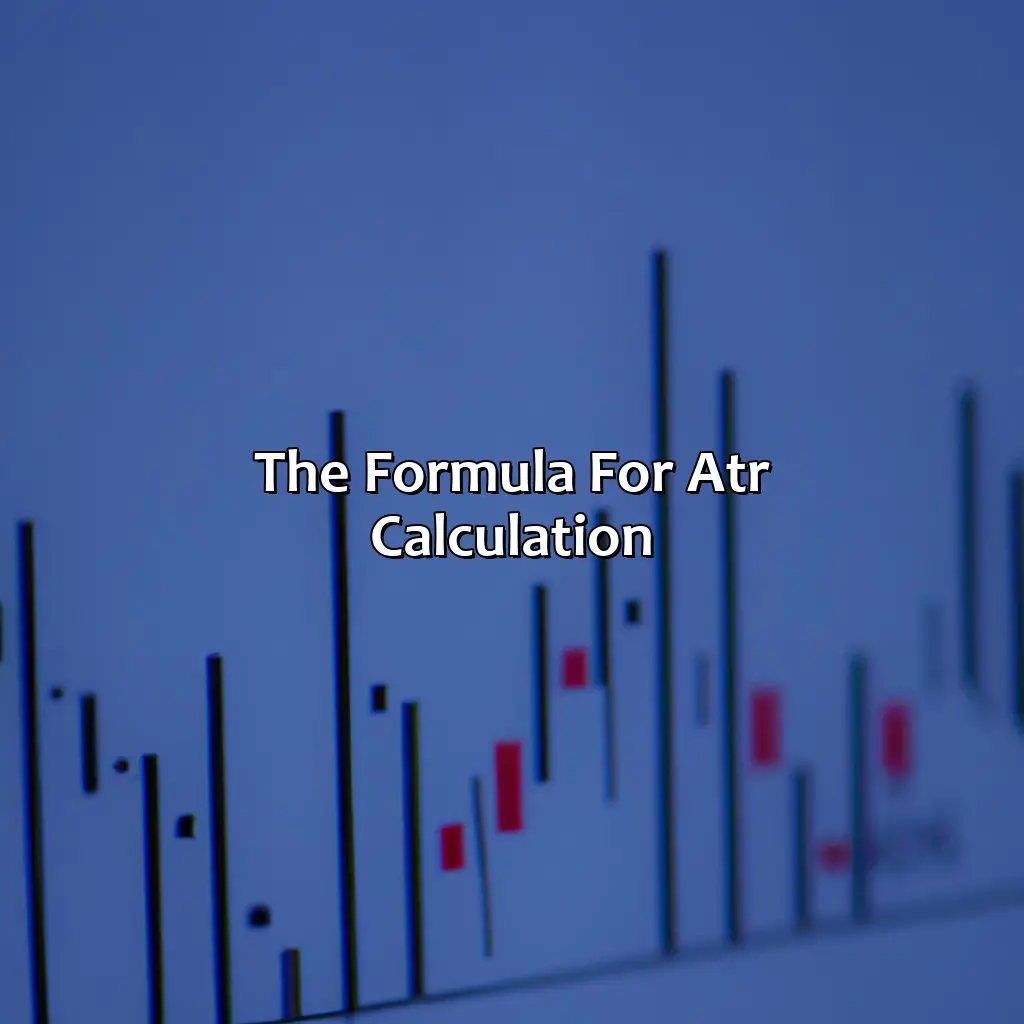
Photo Credits: forexbrokerreport.com by Douglas Taylor
To calculate ATR in forex, you need the formula. Plus, you need the technical indicators. EMA is great for ATR calculation to analyze market trends and create technical signals. SMA is excellent to estimate ATR as a trading tool. Chart the currency pair to analyze the market.
Using exponential moving average
Exponential Moving Average (EMA) is a popular method of calculating the Average True Range (ATR) in forex trading. It involves placing more weight on recent price data compared to older data. This helps to reduce lag issues associated with simple moving averages (SMA). EMA is calculated by taking the weighted average of the previous ATR value and current TR values.
The formula for EMA-based ATR calculation gives more importance to recent price changes, thereby making it more responsive to market fluctuations than SMA-based ATR calculation. This makes it suitable for traders looking for quick technical signals, allowing them to react swiftly to changes in market prices by establishing stop-loss and take-profit levels.
Using EMA as a charting indicator can also aid market analysis since it tracks price action over an extended period, providing insights into long-term trends and reversals in the market. In contrast, using SMA-style charts tends to be slower and less effective in identifying short-term movements.
Pro Tip: It’s essential to understand that there’s no one-size-fits-all approach when using technical indicators like ATR or EMA. What works for one trader might not work for another due to different trading strategies or risk appetites. Therefore, it’s recommended to conduct rigorous backtesting before deploying any system based on these indicators in live trading conditions.
SMA and ATR go hand in hand, providing traders with essential technical signals to decode the mysteries of market analysis and make informed trading decisions.
Using simple moving average
Calculating ATR involves identifying the True Range (TR) of a security by computing the difference between the high and low prices of a given period. This process lets traders measure volatility, which is critical in determining stop loss and take profit levels. In technical analysis, moving averages are essential chart indicators to describe market trends. Using simple moving average (SMA) is a method that averages data within an established period, making it useful for preparing historical changes. In contrast, exponential moving average (EMA) gives more weight to recent prices and corresponds well with current trading signals.
Here’s a 5-step guide on using Simple Moving Average (SMA):
- Add up the prices in your established period.
- Divide the result obtained in step one by your selected time interval to get SMA.
- Plot this value on your chart alongside other price movements.
- Repeat steps one through three as market movement progresses.
- Establish trade positions according to specific points on the smoothed line.
Traders primarily use ATR for market analysis because it assesses volatility and price ranges during specified periods. This tool determines how much risk exists in trades hence helping traders make informed decisions about entering or leaving positions.
Intriguingly, before Wilder introduced ATR to conventional traders using his book “New Concepts in Technical Trading Systems,” he had first used it when forming The Delta Society International in 1977 -the organization designed to assist financially struggling individuals and transform their self-confidence into self-sufficiency through cultivating entrepreneurial skills and financial success stories- after finishing his Ph.D., where he founded Delta’s publishing company- Delta Press Inc.– running 25 different newsletters dedicated explicitly to providing trading insights on all forms of instruments, including stocks, futures, options et cetera until several publishing companies took interest owing diligence of increasing audience reach/ expanding their businesses paying him huge sums of money when acquiring them from him or even being involved directly in the publishing companies.
ATR is the must-have indicator for any serious forex trader to identify volatility, set stop loss levels, and snag breakout opportunities.
Importance of ATR in Forex Trading
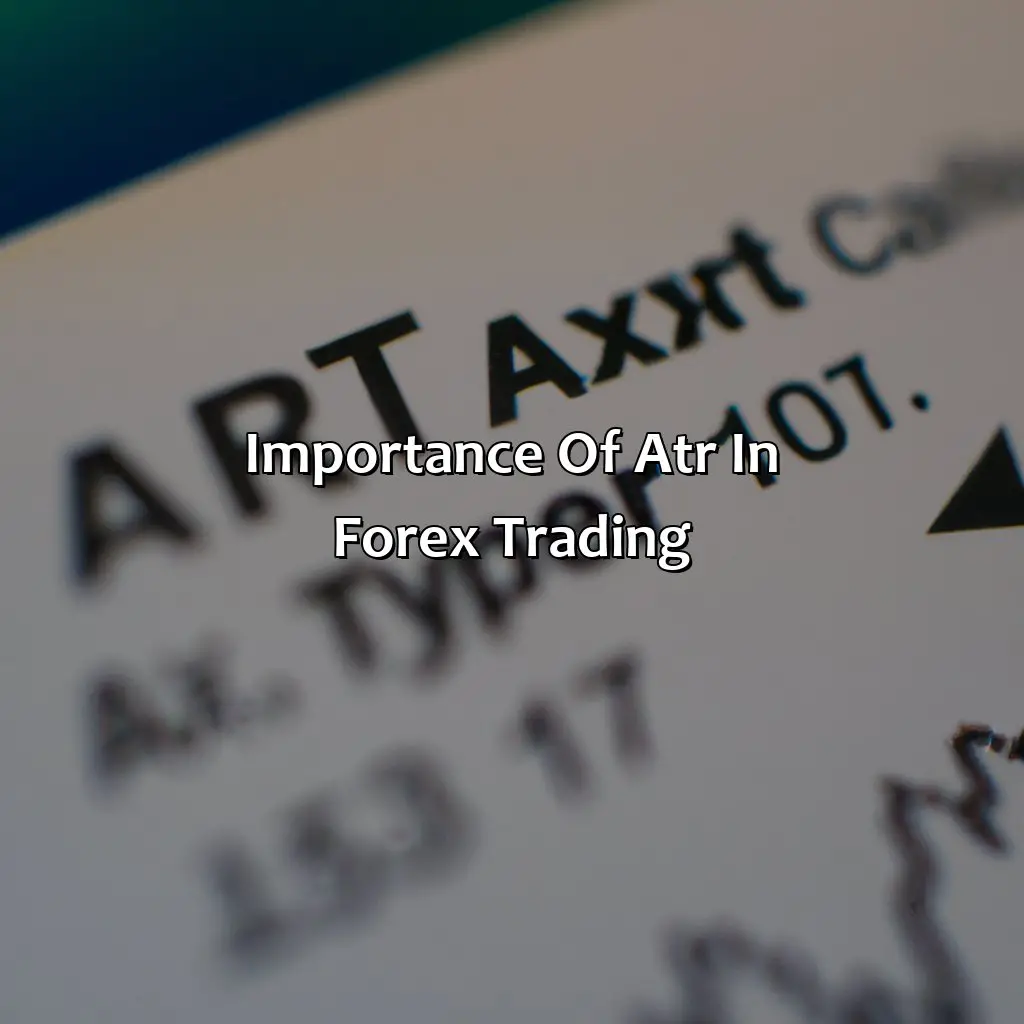
Photo Credits: forexbrokerreport.com by Eric Adams
The importance of ATR in forex trading is immense! It helps measure market volatility, identify trends and chart patterns, and evaluate support and resistance levels. ATR also lets you set stop loss and take profit levels.
Let’s explore how to use ATR to its full potential. We’ll look at how to establish trade entry and exit points using ATR in your risk management plan. Get ready to take your trading to the next level!
Determining volatility
Determining the level of market volatility is a critical aspect of forex trading. ATR can help traders in understanding how much an asset price moves within a given time frame. By analyzing the movement of an asset’s trade, traders can decide whether to enter or exit a trade. ATR does not provide any directional indication, but it gives a better perspective on potential risks and rewards for developing strategies.
ATR calculations incorporate various factors, including trend analysis, chart patterns, support and resistance levels. The formula establishes past trends that help in designing future investment decisions that align with market analysis. Using ATR to measure volatility helps limit risk exposure by setting stop loss levels at appropriate support or resistance points.
When determining volatility using ATR metrics, consider using moving averages as well in order to get clarity on short-term and long-term trendlines. Traders may pay more attention to short-term movements at inflection points to ascertain potential changes in price direction.
Pro Tip: When reviewing charts for identifying volatility, remember to maintain consistency in the timeframes used for calculating ATR calculations.
Protect your profits and limit your losses with ATR-based stop loss and take profit levels in your trading risk management plan.
Setting stop loss and take profit levels
Correctly placing stop loss and take profit levels using ATR is crucial to enhancing one’s risk management plan in trading. Here’s how to set them:
- Identify the market’s current volatility.
- Use ATR to determine the market’s average volatility.
- Calculate stop loss distance based on this value.
- Position your take profit level at twice or thrice distance from the entry point of your trade.
- Update stop loss and take profits levels regularly by recalculating ATR periodically.
Setting stop loss and take profits levels using ATR help traders protect their investment, control potential losses while minimising risks.
ATR measures volatility in forex markets. It helps traders understand when trends may reverse and makes entry and exit points more accurate, which improves overall risk management plans.
Using ATR for risk management translates into securing investments while maximising gains, such as how traders earn big returns with formulas like 1:2 or 1:3 risk-reward ratio.
Navigating the risky waters of trading becomes smoother with ATR-established entry and exit points.
Establishing trade entry and exit points
To establish trade entry and exit points, traders often utilize the ATR indicator to measure market volatility. This helps determine the best time to enter or exit a trade while minimizing risks.
Here’s a 6-step guide to establishing trade entry and exit points:
- Determine the current ATR reading.
- Identify potential support and resistance levels.
- Look for chart patterns indicating reversals or consolidation.
- Confirm trend strength with other indicators.
- Set entry and exit points based on levels of support and resistance, trend strength, and ATR readings.
- Monitor the trade and adjust exit points as needed.
It is crucial to note that using ATR in trading enables sound risk management practices by limiting potential losses while maximizing profit opportunities.
Traders must also keep in mind that establishing entry and exit points should be tailored to individual trading styles and risk tolerance levels.
FACT: According to Investopedia, using ATR in intraday trading can help traders determine whether they should hold off on placing trades until market conditions improve.
ATR: The essential tool for any savvy forex trader looking to master the art of strategizing in the volatile world of forex trading.
ATR Strategies for Forex Trading
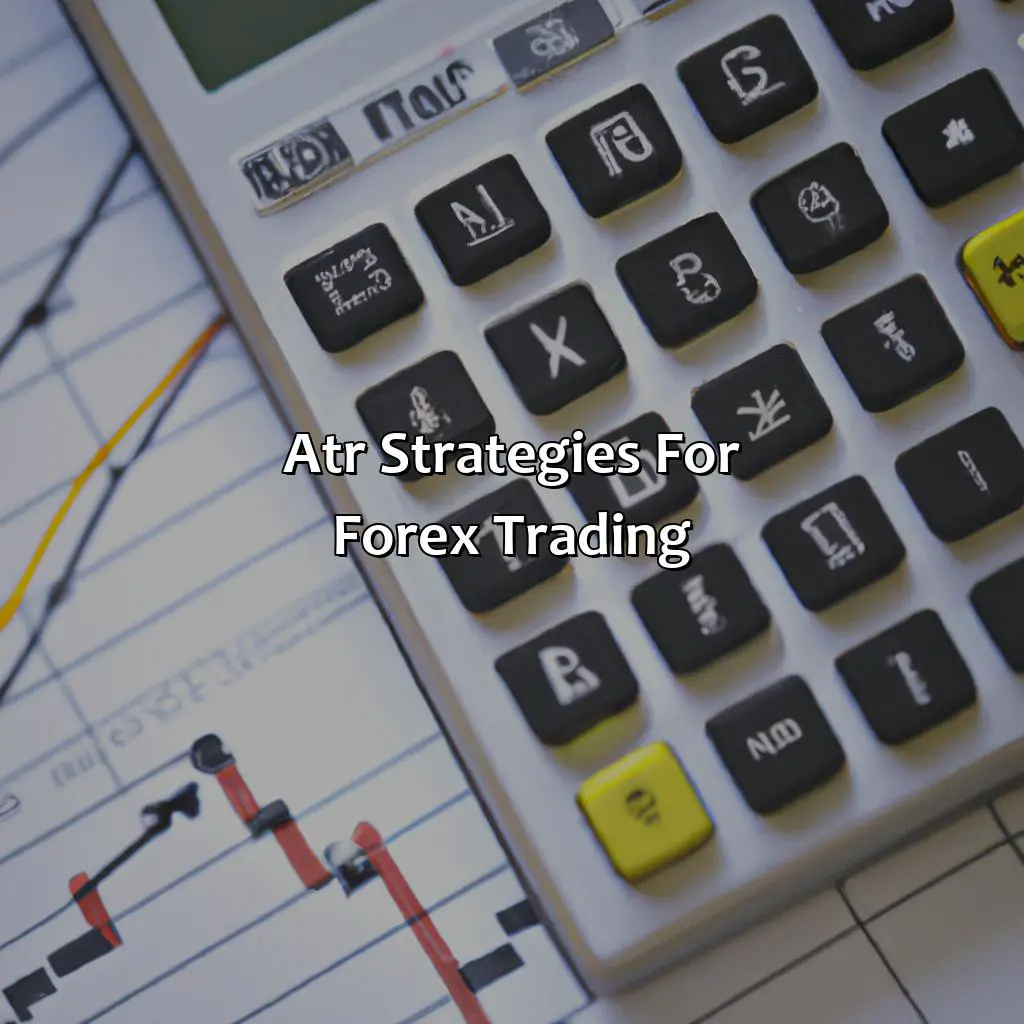
Photo Credits: forexbrokerreport.com by Jeffrey Perez
Text: Employ ATR strategies in forex trading with technical analysis. Check out the sub-sections for volatility, breakout strategy, position size, and trading system.
ATR breakout strategy uses chart patterns and market analysis.
ATR stop loss strategy concentrates on risk management, stop loss, and trailing stop.
ATR position sizing strategy focuses on risk management, position sizing, position trading, and currency exchange.
ATR Breakout Strategy
An effective way to trade Forex using ATR is through the ATR breakout strategy, which involves identifying potential trading opportunities based on a break in volatility.
Here is a simple 4-step guide to implement the ATR breakout strategy in Forex trading:
- Identify the currency pair and chart timeframe to trade.
- Calculate the ATR value for that timeframe using the formula mentioned earlier.
- Place pending orders (buy stop or sell stop) beyond the recent high or low of price movement. The distance should be equal to two times the calculated ATR value.
- Once the price crosses above or below this level, take action and execute your trade based on relevant chart patterns and market analysis.
It is important to keep in mind that this strategy only works when there is significant volatility present in the market. In other words, if price remains relatively stable, there might not be any valid opportunities for an ATR breakout.
The ATR breakout strategy can be an effective tool for traders looking to make use of chart patterns and market analysis in their trading approach. It can also help reduce risk by setting appropriate stop loss levels.
Don’t miss out on using this powerful tool in your trading arsenal – give it a try today. Don’t let your trading account take a nosedive – implement the ATR stop loss strategy for effective risk management.
ATR Stop Loss Strategy
The ATR Stop Loss Strategy is a risk management technique used in trading that involves setting a stop loss level based on the Average True Range (ATR) indicator. By using the ATR, traders can adjust their stop loss levels according to market volatility.
Here’s a 5-step guide to implementing the ATR Stop Loss Strategy:
- Identify the ATR of the asset you are trading;
- Determine your preferred risk/reward ratio and position size;
- Calculate the distance between your entry point and your stop loss point by multiplying the ATR value by a certain multiple (e.g., 2x or 3x);
- Place your stop loss at this calculated distance from your entry point;
- Monitor the trade and readjust your ATR-based stop loss as price moves in your favor, otherwise known as trailing stops.
It’s worth noting that the key advantage of using the ATR Stop Loss Strategy is that it allows traders to set appropriate stop losses taking into account market volatility, which can help prevent unnecessary losses. Traders employ this strategy in order to manage their risk when choosing trades with larger or unknown market movements by adapting to those changes through changes in their method of analysis.
In fact, many successful traders have cited using such tools for pushing up profits and reducing losses over time, indicating widespread adoption across recent decades in financial markets globally without prejudice towards any particular one.
ATR Position Sizing Strategy
Position sizing plays a crucial role in risk management for traders while trading in currency exchange. The ATR method is one way to determine an appropriate position size based on market volatility.
Here is a 3-step guide on using the ATR Position Sizing Strategy:
- Calculate the ATR value using any of the methods discussed earlier – exponential moving average (EMA) or simple moving average(SMA).
- Determine the percentage of your trading account that you are willing to risk per trade.
- Divide the percentage risk amount by the ATR value, which will give you the appropriate position size to take based on market volatility.
It’s important to note that this strategy can help with position trading, but it can also result in larger position sizes during high-volatility periods. Therefore, it’s crucial to regularly review and adjust your position sizing as per market conditions.
Pro Tip: Reviewing and adjusting your position sizing should be part of your regular risk management practice as a trader.
Five Facts About How To Calculate ATR In Forex:
- ✅ Average True Range (ATR) is a technical analysis indicator used to measure market volatility. (Source: Investopedia)
- ✅ ATR is calculated by measuring the highest price of the current period minus the lowest price of the current period, taking into account the previous period’s closing price. (Source: IG)
- ✅ ATR is usually displayed as an oscillator, with higher values indicating higher volatility, and lower values indicating lower volatility. (Source: Fidelity)
- ✅ Traders often use ATR to set stop-loss and take-profit levels, as well as identifying potential breakouts and entry/exit points in the market. (Source: Forex.com)
- ✅ ATR can be used in conjunction with other technical analysis tools, such as Moving Averages and Bollinger Bands, to provide additional insights into market trends and behavior. (Source: DailyFX)
FAQs about How Do You Calculate Atr In Forex?
What is ATR in forex and how is it calculated?
ATR stands for Average True Range, which is a popular forex indicator that measures the volatility of a currency pair. ATR is calculated by taking the average of the true range over a specified period of time, typically 14 days.
What is the true range in forex?
The true range is a measure of the volatility of a currency pair and is calculated as the highest of the following: the difference between the current high and the previous close, the difference between the current low and the previous close, and the difference between the current high and the current low.
How can ATR be used in forex trading?
ATR can be used as a tool to help traders identify potential breakouts, determine stop loss levels, and manage risk. When the ATR is high, it indicates that the currency pair is experiencing high volatility and traders may want to adjust their position size or move their stop loss levels farther away from the current price.
What is the importance of forex indicators in trading?
Forex indicators are an important tool in trading as they help traders analyze the market and make informed trading decisions. They can be used to identify trends, measure volatility, determine support and resistance levels, and more.
What other forex indicators can be used in conjunction with ATR?
Traders often use ATR in combination with other indicators such as moving averages, bollinger bands, and stochastic oscillators. These indicators can provide additional information on price trends, momentum, and potential reversals.
Are there any drawbacks to using ATR in forex trading?
While ATR can be a useful indicator for measuring volatility, it should not be relied on as the sole determinant of trading decisions. Traders should always consider a variety of factors when making trading decisions, including economic events, political developments, and market sentiment.

